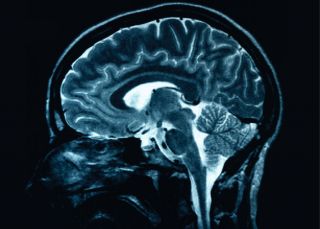Intelligence
Why Your Gifted Teen May Act Anything But Gifted
Part Two of "Brain Basics": how the frontal lobe and the amygdala affect teens.
Posted November 25, 2012
In my last article in this series, we discussed the importance and power of visualization in the long-term retention of information. Visualization, as you may recall, lies primarily in the occipital lobe of the brain, which is located at the back of the skull. (Imagine if you ran a lap at your local pool—a true no-no, of course—and slipped backward on a slick of water. It would be that portion of the brain and the tender portions below that would receive the majority of the impact and is at least partially the reason you might very well see stars or black out before the lifeguard got to you.)

In my last article in this series, we discussed the importance and power of visualization in the long-term retention of information. Visualization, as you may recall, lies primarily in the occipital lobe of the brain, which is located at the back of the skull. (Imagine if you ran a lap at your local pool—a true no-no, of course—and slipped backward on a slick of water. It would be that portion of the brain and the tender portions below that would receive the majority of the impact and is at least partially the reason you might very well see stars or black out before the lifeguard got to you.)
Today we’ll take a look at the opposite side of the brain—the frontal lobe—and see how it interacts with a very small portion that is located deeper inside, almost centrally. What you will find fascinating is how the frontal lobe and the amygdala particularly can affect the behavior and choices that teens make on a daily basis. In fact, in a page or two, you will understand precisely why even your gifted teen (child or student) can sometimes act anything but intellectually advanced.

And then there’s the amygdala: the seat of emotion.

And then there’s the amygdala: the seat of emotion.
Put those two parts of the brain together in a teenager… and therein lies the rub of the matter. During adolescence, as a child goes through puberty, the amygdala is extremely active, nearly always in a state of stimulation. At the same time, research shows us that the frontal lobe is also not fully matured. (In fact, the frontal lobe won’t be until the early 20s.) So when you combine those two equally important facts together at the same time, you begin to understand why even your gifted teen might make poor decisions.
Consider this simple, common example. A teen who has just recently gotten his license is in the car with friends on the way to a Friday night football game. He is driving at a safe speed but then, up ahead a hundred yards away, the traffic light has just turned yellow. Rationally, we know, he should slow down and prepare to stop. But what does he the teenager do? He floors the gas, accelerating to beat the light. Hopefully all goes well and everyone is uninjured on the other side of that intersection. But what has just happened in that teen’s brain?
- He sees the light change and his amygdala (as we said, veryactive in adolescence) is excited by the possibility of outracing the yellow light. (His desire to impress friends in the car may not help much either.)
- His as-yet-fully-developed frontal lobe has less capacity to assist him in thinking rationally about his decision to beat the light, and…
- His as-yet-fully-developed frontal lobe does little to help him control his impulse to mash his foot down on the accelerator.
- The result is a close call at the intersection—and a ticket for running the light that turned red just as he reached the point of no return.
Please also note that this brain response is the exact, precise process that occurs when teens (and others, to be fair) receive and then 'decide' to respond to text messages while driving. Only this time, the text notification tone is the amygdala excitor, not the yellow light.
Later, when you as a parent or a teacher ask him about his decision (“C’mon, you know better than that! Why would you do such a thing?! Now your insurance rates are going to be sky high!”) you get a weak, confused, shrug of the shoulders in response. Or you receive an over-the-top amygdala reaction full of yelling or crying or something in between. But wait, there’s even more to consider….
In all people, regardless of age, alcohol consumption exaggerates these effects.

In all people, regardless of age, alcohol consumption exaggerates these effects.
So why does this understanding of frontal lobe and amygdala interaction matter?

So why does this understanding of frontal lobe and amygdala interaction matter?




